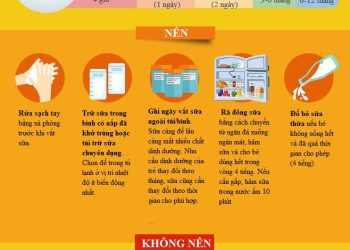The 1910 Lincoln penny’s value ranges from 25 cents to over $100, depending on condition and mint mark. The 1910-S (San Francisco) is more valuable due to lower mintage, worth $6-$8 in poor condition and $50+ in extremely fine condition. Philadelphia coins (no mint mark) are worth $0.25-$0.50 circulated, or $5-$10+ uncirculated. Key value factors include mint mark, condition (sharp details on Lincoln’s features), and errors. Common errors like doubled dies, off-center strikes, and wrong planchets can significantly increase value, sometimes reaching hundreds of dollars for high-grade error coins.
That old penny sitting in your collection drawer might be worth far more than one cent. The 1910 Lincoln penny represents one of the earliest years of this iconic American coin design, and depending on specific characteristics like mint marks, condition, and potential errors, your coin could be valued anywhere from 25 cents to over $100. Understanding what separates a common circulated piece from a valuable collectible can help you identify hidden treasures in your possession.
The Significant Price Gap Between Philadelphia and San Francisco Mints
Not all 1910 pennies share the same value, and the mint location plays a crucial role in determining worth. Coins produced at the Philadelphia mint carry no mint mark, while those from San Francisco display a small “S” beneath the date. This seemingly minor difference creates a substantial value disparity in today’s collector market.
The 1910-S penny qualifies as a semi-key date due to its lower mintage numbers compared to the Philadelphia production. This scarcity translates directly to higher prices across all condition grades. A worn Philadelphia penny typically fetches between $0.25 and $0.50, while its San Francisco counterpart in similarly poor condition commands $6 to $8—more than ten times the value.
For collectors seeking better preserved specimens, the gap widens further. An extremely fine or uncirculated Philadelphia penny reaches approximately $5 to $10 or more, whereas a 1910-S in extremely fine circulated condition approaches $50. Uncirculated San Francisco examples can exceed $80, making the mint mark one of the most important value factors for these coins.
How Coin Condition Transforms Value Dramatically
Grading determines the difference between pocket change and a significant investment. Condition assessment focuses on the preservation of details, particularly on Lincoln’s portrait where hair and beard definition serves as a primary indicator of grade quality.
Circulated coins show wear from handling and use in commerce. The majority of surviving 1910 pennies fall into this category, displaying smooth spots where high points of the design contacted other surfaces. These worn examples represent the lower end of the value spectrum, with Philadelphia pieces worth quarters or half-dollars, while San Francisco coins start around the six-dollar mark.
Higher grade specimens preserve sharp details throughout the design. Clear lines in Lincoln’s hair, distinct beard definition, and crisp lettering indicate minimal circulation or complete absence of wear. These visual qualities elevate value substantially—a high-grade Philadelphia penny can be worth twenty times more than a worn example, while exceptional 1910-S pennies can reach values exceeding $80 based solely on superior preservation.
Error Coins: The Game-Changers in Penny Values
Manufacturing imperfections that would typically represent quality control failures become valuable collector items in the numismatic world. Errors on 1910 pennies, particularly when found on high-grade specimens, can increase values significantly—sometimes reaching hundreds of dollars for rare or dramatic error types.
Doubled dies occur when the striking die impacts the coin blank twice, creating a visible doubled image in lettering or design elements. This duplication appears most noticeably in words and numbers, where careful examination reveals two overlapping impressions.
Off-center strikes happen when the die alignment fails during production, resulting in the design appearing shifted from its proper position. The degree of off-center positioning and whether the date remains visible both affect the error’s desirability and value.
Wrong planchet errors represent coins struck on blanks intended for different denominations or even foreign currencies. A 1910 penny struck on a nickel planchet or foreign blank creates an immediately recognizable and valuable error that collectors actively seek.
High-grade error coins combine rarity with preservation, making them particularly valuable. An error that might add modest value to a worn coin can multiply the worth of an uncirculated specimen many times over.
Identifying Your 1910 Penny’s True Worth
Begin your evaluation by checking for the mint mark. Examine the area directly below the date on the obverse (front) side of the coin. An “S” indicates San Francisco production and immediately places your coin in the higher value category. Absence of any letter means Philadelphia minting.
Next, assess the condition honestly. Compare your coin’s detail preservation against reference images, paying special attention to Lincoln’s facial features. Can you distinguish individual hair strands? Are beard lines sharp or worn smooth? These observations guide your condition estimate.
Finally, inspect carefully for errors using magnification. A quality magnifying glass or jeweler’s loupe allows detailed examination of lettering, date numbers, and design elements for doubling, misalignments, or other anomalies. Check the coin’s edge and overall centering for strike irregularities.
Maximizing Returns on Your 1910 Penny Discovery
For coins appearing to grade extremely fine or better, or those displaying potential errors, professional grading services provide authentication and encapsulation that enhances marketability and value. The modest grading fee often returns multiples in increased selling price for genuinely valuable specimens.
Current market conditions favor sellers of better-date early Lincoln cents. Online auction platforms, coin dealer networks, and collector forums provide multiple venues for connecting with buyers actively seeking 1910 pennies, particularly the scarcer San Francisco mint marks and error varieties. Document your coin with clear photographs showing both sides, the mint mark area, and any error characteristics to attract serious collector interest and achieve optimal pricing.









What is the error on the 1910 penny?
Common 1910 penny errors include repunched mint marks (especially on the 1910-S San Francisco mint mark), which can be a significant error, and broad strikes or lamination errors, where the coin’s surface has physical flaws. Other errors can include doubled dies, causing doubled letters, and lamination issues. The value of these error coins depends on factors like the specific error’s rarity, the coin’s condition, and the grade it receives from a professional grading service.
What is special about a 1910 penny?
The 1910 Penny is part of the Lincoln Cent series, introduced in 1909 to commemorate the 100th anniversary of Abraham Lincoln’s birth. It features a portrait of Lincoln on the obverse (front) and two wheat ears on the reverse until 1958. The 1910 coins were widely circulated and used in everyday commerce.
Are there pennies with no mint mark that are worth money?
No, most no-mint-mark pennies are not worth anything beyond their face value (one cent) because the absence of a mint mark typically indicates they were minted at the Philadelphia Mint, which produces most of the U.S. pennies. However, a very small number of no-mint-mark pennies are valuable due to manufacturing errors, such as the 1982-D small date copper penny or a doubled die error on a 1983 penny, which are exceptionally rare.
What year is penny worth $2000000?
Rare & Valuable $2,000,000 1974 D Aluminum Lincoln Cents Are Still In Circulation Today! Penny.